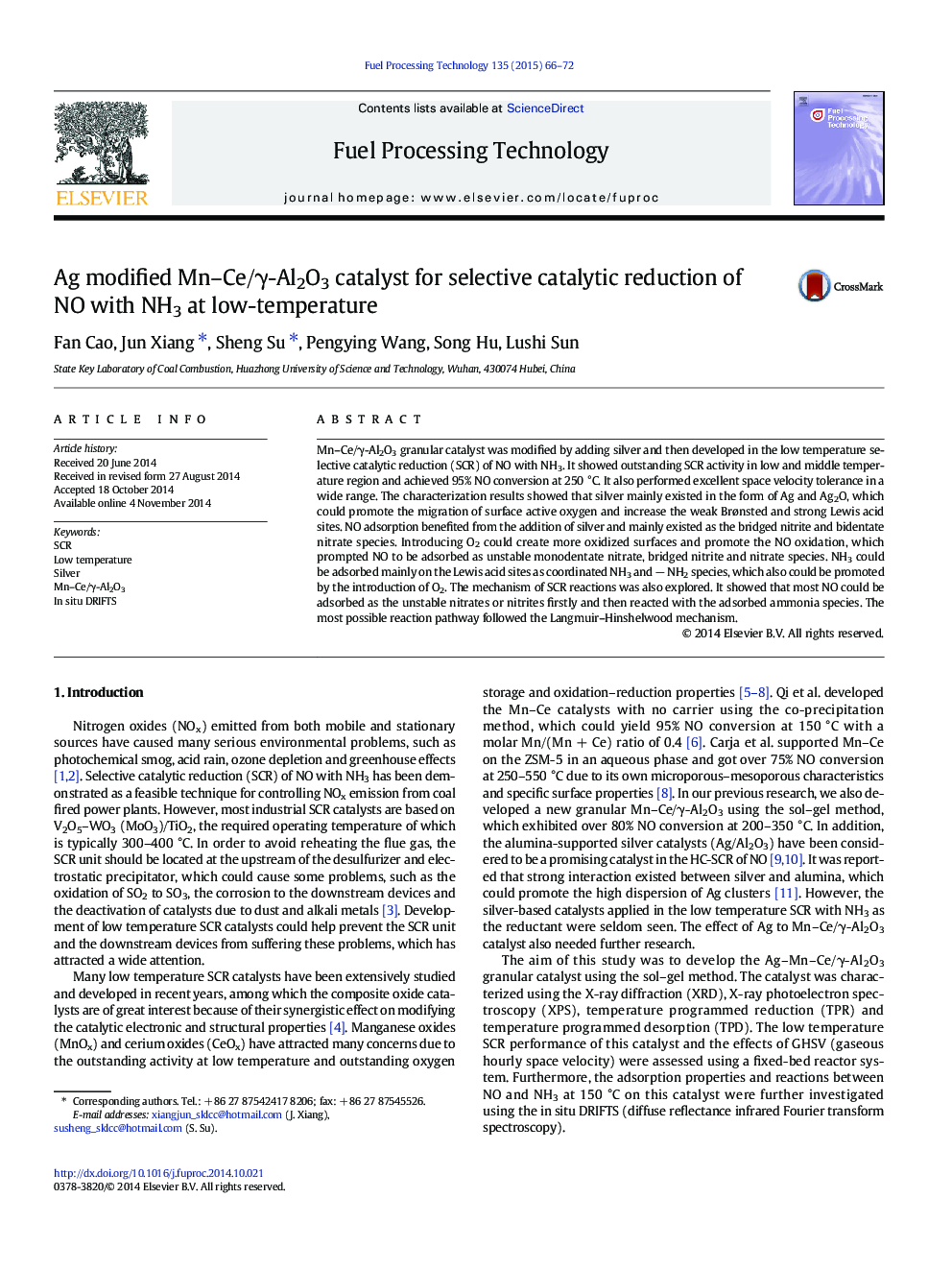| Article ID | Journal | Published Year | Pages | File Type |
|---|---|---|---|---|
| 209403 | Fuel Processing Technology | 2015 | 7 Pages |
•Ag–Mn–Ce/γ-Al2O3 catalyst showed high SCR activity at low and middle temperature region.•Silver mainly existed in the form of Ag and Ag2O phase.•NO and NH3 could be adsorbed on the catalyst in different forms.•The most possible SCR reaction pathway followed Langmuir–Hinshelwood mechanism.
Mn–Ce/γ-Al2O3 granular catalyst was modified by adding silver and then developed in the low temperature selective catalytic reduction (SCR) of NO with NH3. It showed outstanding SCR activity in low and middle temperature region and achieved 95% NO conversion at 250 °C. It also performed excellent space velocity tolerance in a wide range. The characterization results showed that silver mainly existed in the form of Ag and Ag2O, which could promote the migration of surface active oxygen and increase the weak Brønsted and strong Lewis acid sites. NO adsorption benefited from the addition of silver and mainly existed as the bridged nitrite and bidentate nitrate species. Introducing O2 could create more oxidized surfaces and promote the NO oxidation, which prompted NO to be adsorbed as unstable monodentate nitrate, bridged nitrite and nitrate species. NH3 could be adsorbed mainly on the Lewis acid sites as coordinated NH3 and − NH2 species, which also could be promoted by the introduction of O2. The mechanism of SCR reactions was also explored. It showed that most NO could be adsorbed as the unstable nitrates or nitrites firstly and then reacted with the adsorbed ammonia species. The most possible reaction pathway followed the Langmuir–Hinshelwood mechanism.
Graphical abstractFigure optionsDownload full-size imageDownload as PowerPoint slide
